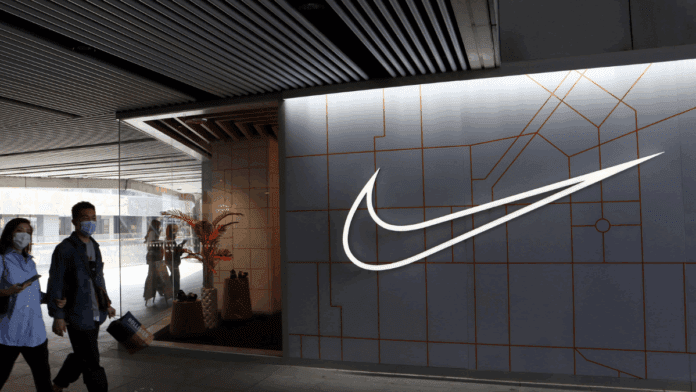Nike has announced a major move to reduce its dependence on factories in China for making shoes sold in the United States. The decision comes as the U.S. government continues to place heavy tariffs on goods imported from China, making it more expensive for companies like Nike to bring products into the country.
Tariffs are extra taxes on imported goods. For Nike, this means that bringing shoes from China to the U.S. has become a lot more costly. According to the company, these tariffs could raise their expenses by nearly $1 billion. To deal with this, Nike is working on making fewer of its shoes in China and more in other countries.
Right now, about 16% of Nike’s shoes sold in the U.S. are made in China. But by May 2026, the company plans to lower that number to a “high single-digit percentage.” That means Nike wants fewer than 10% of its U.S.-bound shoes to be made in China.
Nike’s top finance official said the company will change where its products are made to reduce the financial impact of these tariffs. This process, called “sourcing optimization,” involves shifting production to other countries with lower or no tariffs.
Even though Nike is facing higher costs and a challenging business environment, the company still managed to beat Wall Street expectations in its latest quarterly earnings. In the fourth quarter, Nike’s total sales dropped by 12%, falling to $11.10 billion. Analysts were expecting a bigger drop of nearly 15%, so the smaller decline was seen as a positive surprise.
As a result of this better-than-expected performance, Nike’s stock price jumped 11% during extended trading hours. Investors seemed pleased with the company’s plan to handle the tariff problem and keep sales from falling too sharply.
For the upcoming first quarter, Nike expects its revenue to fall again, this time in the “mid-single digits.” That’s slightly better than what analysts had predicted, which was a 7.3% decline.
While sales were down overall, there was good news in one key area. Nike’s running shoes, like the popular Pegasus and Vomero models, saw growth again after several slow quarters. The company has been putting more money into developing and marketing these shoes, and it seems to be paying off.
On the other hand, Nike has started to make fewer of its older sneaker styles like the Air Force 1. These shoes have lost some popularity, especially at big retail stores.
Nike Boosts Marketing and Shifts Production Strategy
To support its new direction, Nike has also increased its marketing budget. In the most recent quarter, marketing spending went up by 15% compared to the same time last year. The company is promoting its products by hosting special events and working with star athletes.
One recent example was a big event in Paris where one of Nike’s sponsored athletes tried to break the four-minute mile. Although she didn’t reach that goal, she still set a new unofficial record. The event got a lot of attention online and was part of Nike’s plan to excite fans and promote its performance-based products.
While Nike is reducing production in China, it will also look at ways to cut internal costs. The company said it might lower its corporate expenses to help manage the tariff-related price increases. Some of Nike’s product prices in the U.S. have already gone up, but executives believe that other brands will do the same, so Nike likely won’t lose many customers.
In China, Nike is still struggling. Sales in that market are weak due to a slow economy and growing competition. Company leaders said that a full recovery in China will take time.
As of May 31, Nike’s inventory stood at $7.5 billion, about the same as the previous year. That shows the company has been managing its stock levels carefully during this challenging period.


